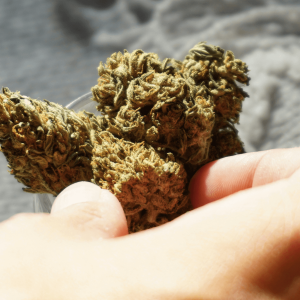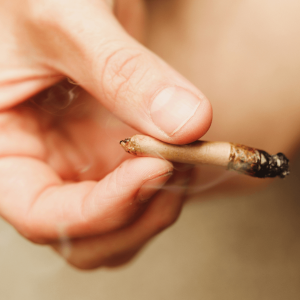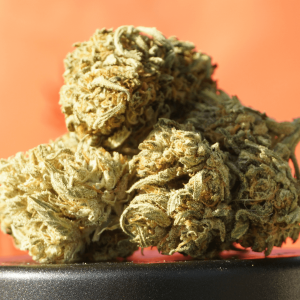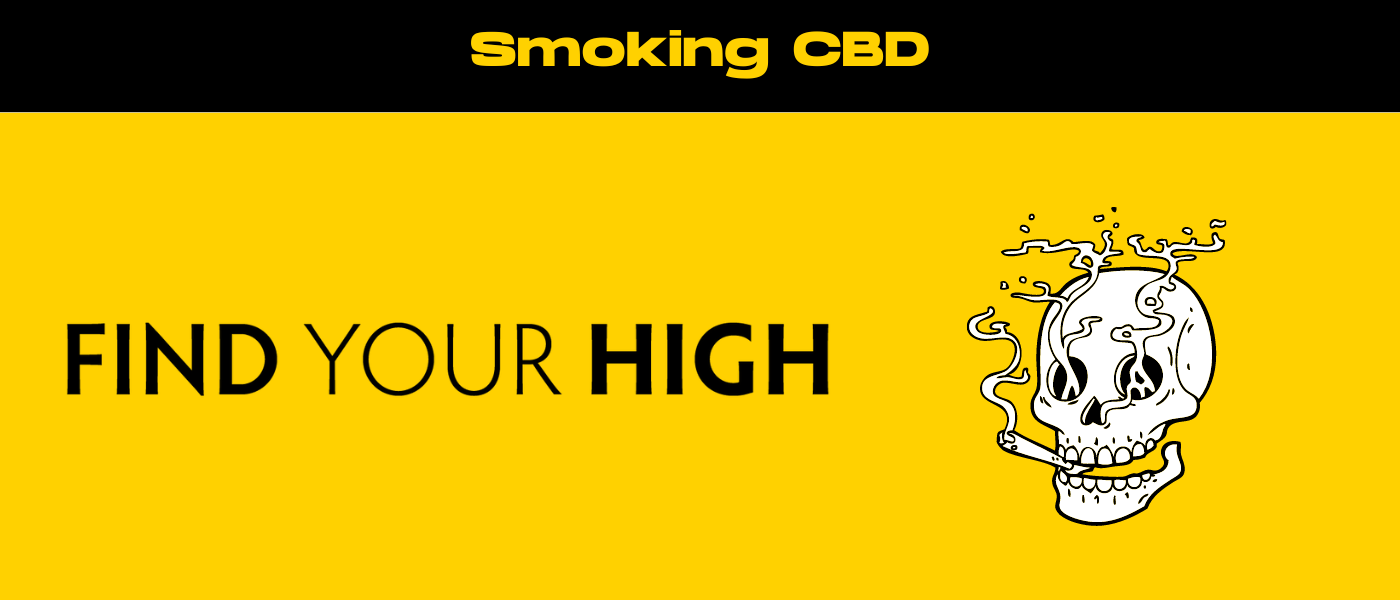Is smoking CBD… a thing? Let’s explore.
Originally derived from the cannabis plant, CBD—or cannabidiol—has taken the health and wellness scene by storm over the past few years. Consumers everywhere are exploring its potential benefits without the psychoactive effects typically associated with its cousin, THC. From oils and tinctures to gummies and vapes, there are endless ways to enjoy CBD’s calming effects.
In this blog, we’ll chat about what makes CBD so popular, the different ways consumers go about smoking CBD flower, and what you should know before jumping into a CBD smoke session. So kick back, get comfy, and let’s explore the ins and outs of smoking CBD-rich cannabis strains.
So, What Exactly is CBD?
Alright, let’s break it down. CBD, short for cannabidiol, is one of over a hundred compounds found in the cannabis plant. Unlike THC, another well-known compound, CBD doesn’t get you high. Instead, it’s all about promoting relaxation without the buzz. This makes it super appealing to those looking to unwind without the psychoactive side effects.
Speaking of THC, the main difference lies in the high—THC gives it, while CBD doesn’t. That makes CBD legal in many regions where THC might not be. However, the exact laws can vary pretty widely depending on where you are, so it’s a good idea to check out your local rules before diving in.

Benefits of Smoking CBD
Now, you might wonder why someone would choose to smoke CBD instead of dropping it in their tea or popping a gummy. One big reason is how quickly it gets to work; the effects of smoking can kick in almost immediately, which is great if you’re looking for instant relief.
Many people turn to the CBD market for its potential to ease anxiety and stress, providing a calming effect that can feel like a breath of fresh air in our busy lives. Also, for those dealing with aches and pains, smoking CBD might offer some quick comfort, helping you get back to your day with a little less burden.
How Smoking CBD Works
So, how does smoking CBD work? It’s pretty straightforward. When you inhale CBD through smoking, it travels fast into your bloodstream via the lung’s alveoli. This means the effects can hit you almost instantly. It’s a quick route to relaxation, often making CBD smokers feel the soothing effects much sooner than through other methods.
Typically, the effects of smoking CBD can last anywhere from a couple of hours to four, depending on your body and how much you’ve consumed. Compared to edibles or oils, which can take from 30 minutes to an hour to kick in, smoking is definitely the quickest way to feel those chill vibes.

Different Tools for Smoking CBD
If you’ve decided that smoking CBD is the way to go, you’ll find a few different tools to suit your style. Here’s a quick rundown of your options:
Joints:
- Overview: Pre-rolled or roll-your-own, joints resemble their THC-filled cousins but offer a non-psychoactive experience.
- Pros: Easy to use and share, portable.
- Cons: May have a stronger smell, less discreet.
Vapes:
- Overview: Electronic devices that heat CBD oil or flower to produce inhalable vapor.
- Pros: Discreet, less odor, customizable settings.
- Cons: Requires charging and maintenance, initial cost can be higher.
Pipes:
- Overview: Classic tools available in various materials like glass or wood, pipes provide a straightforward CBD-smoking experience.
- Pros: Simple, reusable, no rolling needed.
- Cons: Can be harsh on the throat, requires cleaning.
Tips for Choosing the Right Tool
Choosing the right smoking tool can depend on several factors. If you’re looking for something discreet and portable, a vape might be your best bet. If you enjoy the ritual of rolling and don’t mind a bit more preparation, joints could be your preferred method. And for those who prioritize simplicity and reusability, pipes might be the perfect fit.
Consider your lifestyle and preferences when picking your tool, but remember, there’s no wrong choice!
Potential Risks and Considerations
While smoking CBD offers a quick and effective way to enjoy its benefits, it’s not without its fair share of risks.
First off, smoking of any kind may have health implications on lung health, so it’s essential to weigh this if you have any respiratory issues. Additionally, finding the right dosage of CBD isn’t a one-size-fits-all affair. Individual tolerance can vary widely, so it’s wise to start low and gradually work your way up until you achieve the desired effect.
Another key point is the importance of buying quality, tested CBD products. Ensuring your CBD is sourced from reputable companies means you’re consuming a pure product free from harmful contaminants. So don’t just grab any CBD you come across—do your research, and make sure you’re getting a reliable product.
Conclusion: Making an Informed Choice
In wrapping up, it’s clear that CBD smoking sessions offer both significant benefits and potential risks. For many, the calming effects and pain relief are well worth it, but it’s crucial to be mindful of the health implications and make sure you’re using safe, quality-tested products.
If you’re considering trying CBD for the first time, take it slow, and don’t hesitate to reach out to healthcare professionals for advice tailored to your specific needs. They’re a great resource for deciding what might work best for you. Ultimately, with a little research and a mindful approach, you can make an informed choice that’s just right for you.

Frequently Asked Questions
1. Does CBD do anything if you smoke it?
Absolutely! Smoking cannabis CBD provides a quick way to feel its effects, such as relaxation and stress relief. When you smoke CBD from cannabis plants, your body can absorb it rapidly, allowing you to experience its benefits almost immediately.
2. Can you get a buzz from smoking CBD?
Nope, CBD won’t get you high. Unlike its cousin THC, CBD doesn’t have psychoactive properties, so you won’t experience the traditional “high” associated with cannabis.
3. How much CBD is safe to smoke?
The safety and appropriate dosage of CBD can vary based on individual tolerance and needs. A good starting point is to take it slow and start with a low amount to see how your body reacts. You can gradually increase your dosage until you achieve the desired effects. Always consult a healthcare provider if you have concerns or are taking other medications.
4. How many CBD cigarettes can you smoke a day?
There’s no strict rule on the number of CBD cigarettes you can smoke in a day, but it’s important to listen to your body and notice how it responds. Starting with one or two, and then adjusting based on the effects, is often a good strategy. Keep in mind your personal tolerance and desired outcomes, and remember, moderation can be key to making the most of your CBD experience.
5. Where does CBD come from?
CBD, short for cannabidiol, is a natural compound found in the Cannabis sativa plant, which includes both hemp and marijuana. While both plants contain CBD, hemp is the primary source for products, mainly because it has high levels of CBD and very low levels of THC, the psychoactive compound. T
he extraction process usually involves removing CBD from the plant material using methods like CO2 extraction, which is regarded as effective and safe. Once extracted, the CBD can then be infused into various products such as oils, gummies, vapes, and more, allowing for a versatile range of options to suit different preferences and needs.
6. Does medical cannabis contain CBD and THC?
Yes, medical cannabis typically contains both CBD (cannabidiol) and THC (tetrahydrocannabinol). The specific ratio of these compounds can vary depending on the strain and formulation of the product. CBD is often sought after for its potential therapeutic benefits without the psychoactive effects, while THC is known for its ability to provide pain relief and other medicinal properties, along with its characteristic “high.”
Medical marijuana products are often tailored to balance these compounds based on individual patient needs, aiming to maximize therapeutic effects and minimize unwanted side effects. It’s important for users to consult with healthcare professionals to determine the appropriate formulation and dosage suitable for their health needs.
7. Does the controlled substances act address CBD?
Yes, the Controlled Substances Act (CSA) does address CBD, but it’s a bit of a tricky situation. Initially, all cannabinoids, including CBD, were classified under the CSA as Schedule I substances due to their association with cannabis. This changed significantly with the 2018 Farm Bill, which removed hemp-derived CBD from the list of controlled substances, provided it contains less than 0.3% THC.
This legislative change effectively legalized CBD derived from hemp at the federal level, allowing it to be sold and consumed across state lines, although individual states may have their own regulations. Nevertheless, CBD derived from marijuana remains under the CSA’s jurisdiction as a controlled substance.
This legal landscape can be quite complex, so it’s essential for both consumers and vendors to stay informed about both federal and state laws regarding CBD.

 Rewards
Rewards




